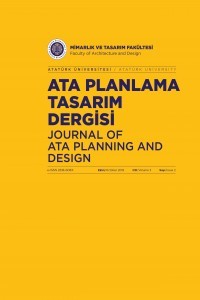
ATA Planlama ve Tasarım Dergisi
Yazarlar: Zeynep Yavuz, Adnan Aksu
Konular:Mimarlık
Anahtar Kelimeler:Palimpsest,Contemporary add/build,Collective memory,Identity,Experience
Özet: The aim of the study is to question the association of contemporary add/building with the aim of keeping historical structures alive as a result of developing technology and how the concept of palimpsest existed in the modern period of architecture/how it will be in the future is examined. Palimpsest can be read on a layer of data and spatial traces accumulated in memory over time. For this purpose, Daniel Libeskind tries to sustain memory by making it an experiential and symbolic place in the Jewish Museum, which he designs with data from collective memory. In this context, first, background is tried to be created with the theoretical readings of collective memory and palimpsest. In continuation, by examining the general characteristics of the designed structure, the identity the historical structure with the contemporary add are discussed in palimpsest. As a result of its interaction with the historical structure next to the museum, which is made with the effort to keep collective memory sustained aura is a palimpsest example and the concept of palimpsest supports the idea that the period of contemporary architecture will become a discourse, especially contemporary additions to historical buildings.